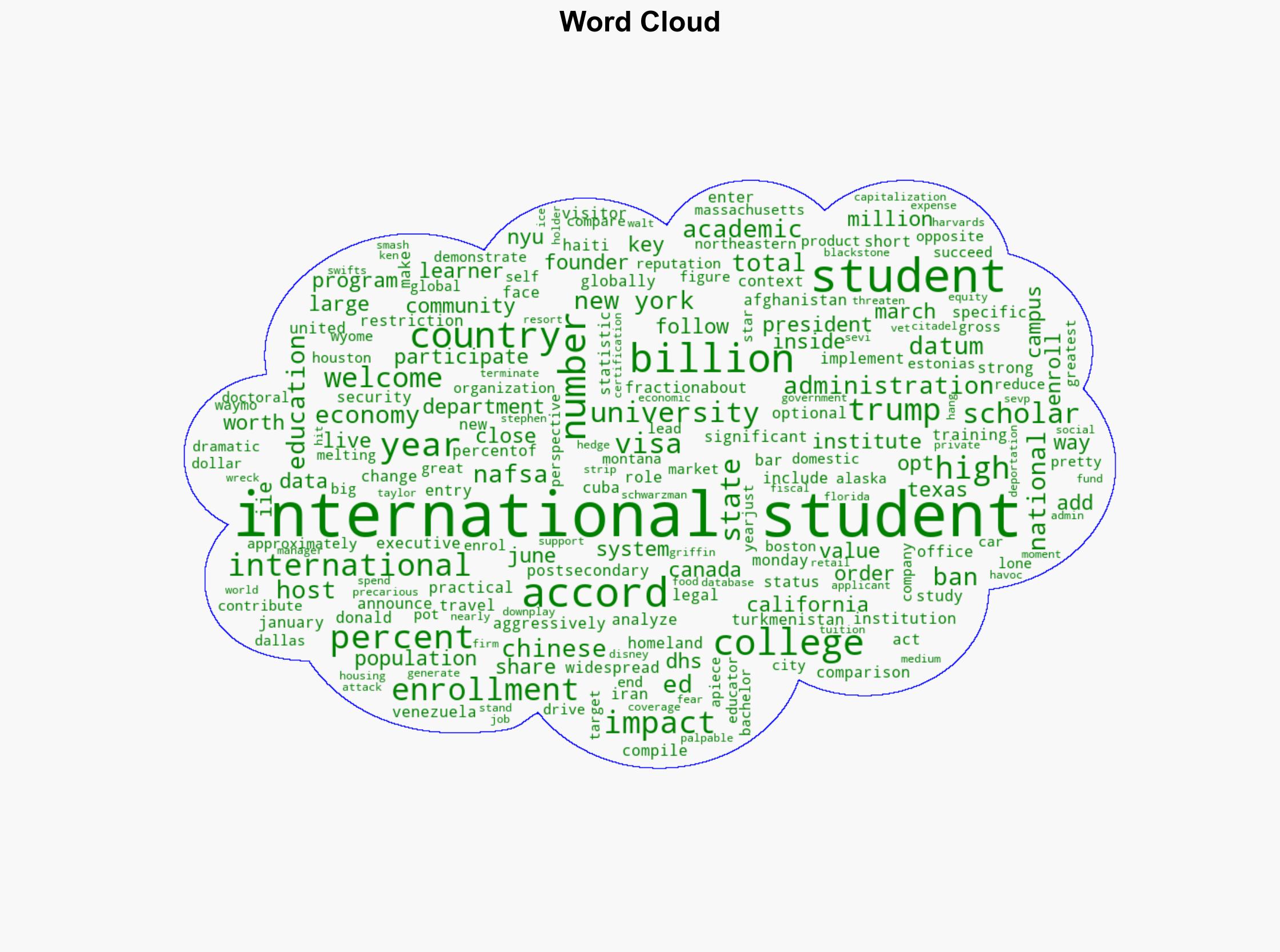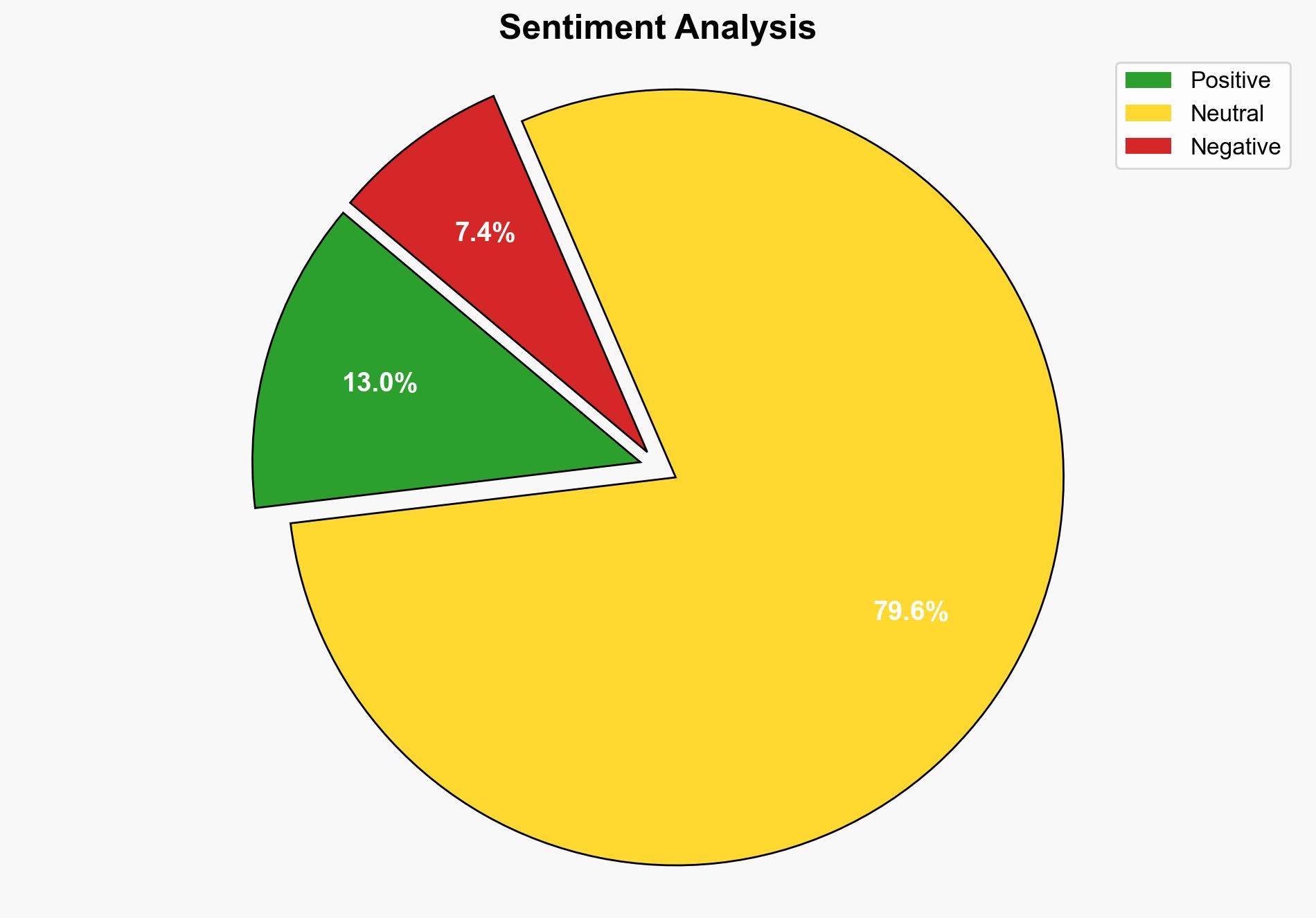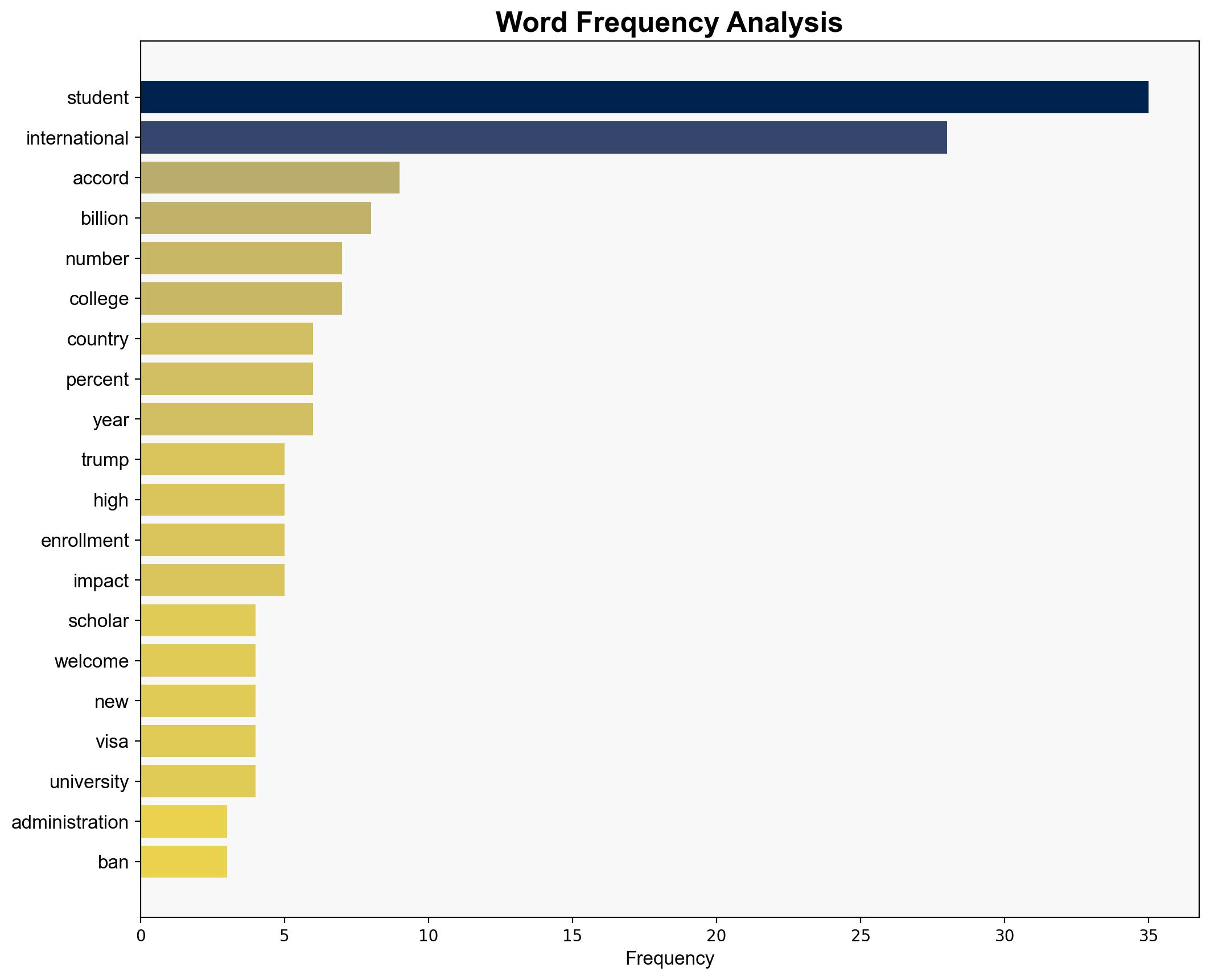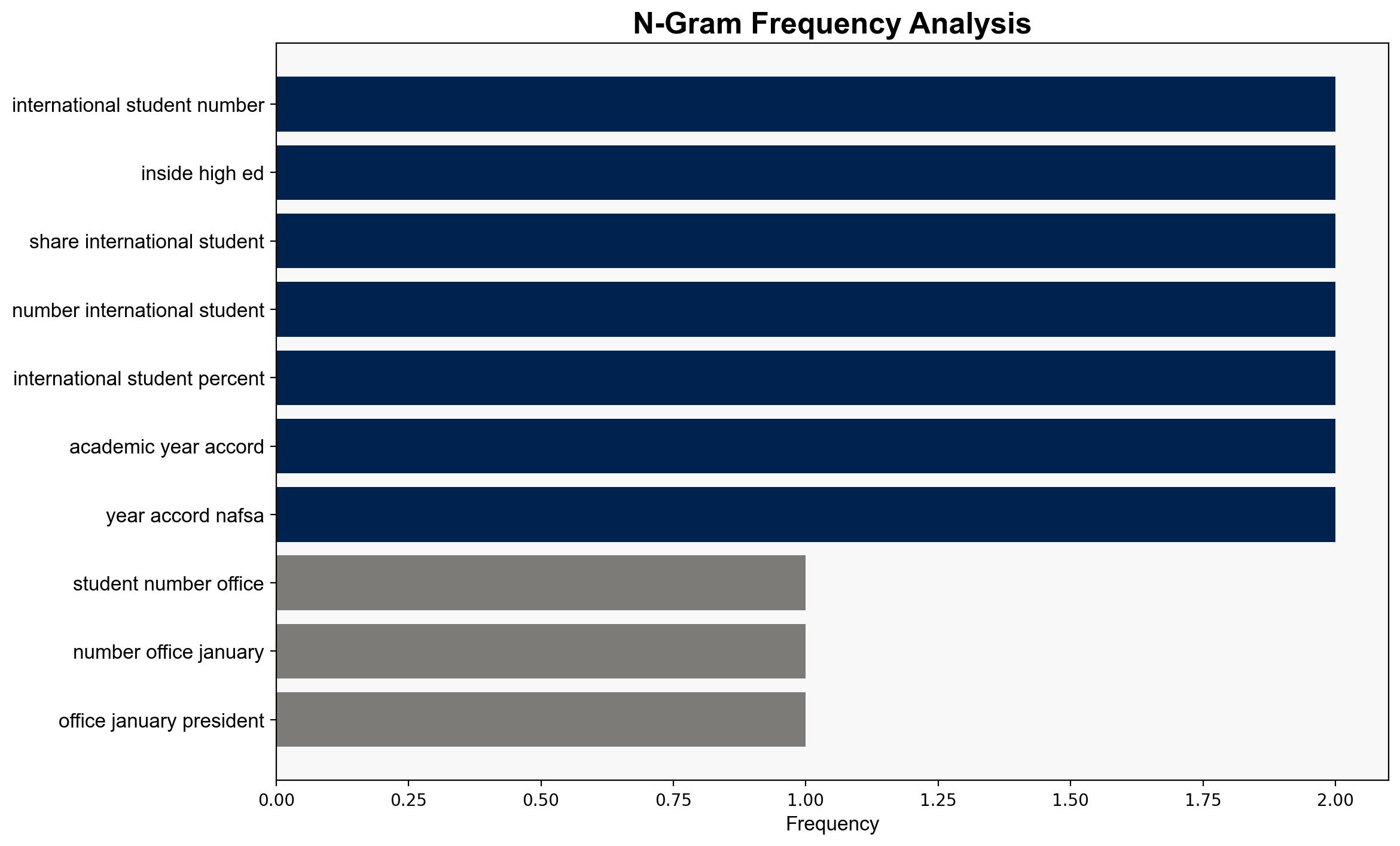International Students by the Numbers – Inside Higher Ed
Published on: 2025-06-11
Intelligence Report: International Students by the Numbers – Inside Higher Ed
1. BLUF (Bottom Line Up Front)
The report highlights the significant role of international students in the U.S. higher education system and their contribution to the economy. Recent policy changes under the Trump administration, including travel bans and visa restrictions, have impacted international student enrollment, particularly from countries like China. Strategic recommendations focus on balancing national security concerns with the economic and cultural benefits of international student presence.
2. Detailed Analysis
The following structured analytic techniques have been applied to ensure methodological consistency:
Causal Layered Analysis (CLA)
Surface events include the implementation of travel bans and visa restrictions. Systemic structures involve legal and institutional frameworks affecting international student mobility. Worldviews reflect the perception of international students as both economic assets and potential security risks. Myths pertain to the narrative of the U.S. as a global education leader.
Cross-Impact Simulation
The reduction in international students, particularly from China, could lead to decreased cultural exchange and economic contributions, affecting local economies and educational institutions. Neighboring countries like Canada may see increased enrollment as students seek alternative destinations.
Scenario Generation
Best Case: Policy adjustments lead to a balanced approach, maintaining security while encouraging international student enrollment.
Worst Case: Continued restrictions result in a significant decline in international student numbers, impacting the U.S. economy and global educational standing.
Most Likely: A moderate decline with gradual policy shifts to address economic impacts.
3. Implications and Strategic Risks
The decline in international student enrollment poses economic risks, including reduced tuition revenue and local economic activity. There are also reputational risks to the U.S. as a preferred education destination. Security measures may inadvertently create diplomatic tensions with affected countries.
4. Recommendations and Outlook
- Reevaluate visa and travel policies to balance security with economic and educational benefits.
- Enhance diplomatic engagement with countries affected by travel restrictions to mitigate tensions.
- Develop strategic partnerships with international institutions to maintain global educational leadership.
- Scenario-based projections suggest a need for adaptive policy frameworks to respond to changing global dynamics.
5. Key Individuals and Entities
Donald Trump, Ken Griffin, Stephen Schwarzman
6. Thematic Tags
international education, economic impact, policy analysis, global mobility




